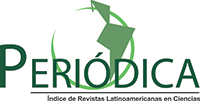Características socioculturais e clínicas de estomizados intestinais e de familiares em um Programa de Ostomizados
DOI:
https://doi.org/10.5216/ree.v15i3.17594Palavras-chave:
Estomia, Procedimentos Cirúrgicos do Sistema Digestório, Programas Nacionais de Saúde, Cuidados de EnfermagemResumo
RESUMO
Estudo descritivo que teve por objetivo analisar as características socioculturais e clínicas de estomizados intestinais e de familiares no Programa de Ostomizados de um município paulista. Participaram do estudo catorze informantes, entre estomizados intestinais e familiares, por meio de entrevistas semiestruturadas em profundidade, realizadas no período de dezembro/2010 a janeiro/2011. As características socioculturais e clínicas desta clientela mostraram predominância de pessoas da classe popular, com faixa etária acima de 58 anos, ensino fundamental incompleto, renda familiar de até dois salários mínimos. Os estomizados apresentaram predomínio de diagnóstico oncológico e histórico de tratamento antineoplásico adjuvante. Apesar do convívio com familiares que auxiliavam no autocuidado, indicaram dificuldades para participação efetiva nas atividades do Programa de Ostomizados. A análise das características desta clientela indicou a necessidade de reavaliar as estratégias utilizadas na assistência especializada para assegurar maior participação, considerando o comprometimento clínico destes estomizados e a dependência em relação aos seus familiares.
Descritores: Estomia; Procedimentos Cirúrgicos do Sistema Digestório; Programas Nacionais de Saúde; Cuidados de Enfermagem.













